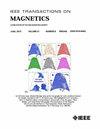IoT-Oriented Single-Transmitter Multiple-Receiver Wireless Charging Systems Using Hybrid Multi-Frequency Pulse Modulation
IF 2.1
3区 工程技术
Q3 ENGINEERING, ELECTRICAL & ELECTRONIC
引用次数: 0
Abstract
For Internet-of-Things (IoT) devices, battery life is always one of the most challenging technical issues. How to extend the working duration is always a concern for IoT in the premise of increasing no battery capacity. Multi-frequency single-transmitter multiple-receiver wireless charging (MF-STMR-WC), designed to minimize the inductive cross-coupling effect, is well-suited for simultaneously charging multiple IoT devices. The key technique for MF-STMR-WC systems is the multi-frequency modulation method. Conventional methods primarily rely on pulsewidth modulation (PWM), offering independent power allocation but involving a high switching frequency. This article proposes a hybrid multi-frequency pulse modulation (HMFPM) method that combines pulsewidth and density modulation. By incorporating pulse density modulation (PDM), the switching frequency decreases, leading to reduced switching losses and improved efficiency. The experimental results verify the effectiveness of the proposed HMFPM method. In comparison to a conventional PWM method with the lowest switching frequency, the proposed method helps attain lower inverter power loss of up to 48.78% and higher power transfer efficiency of up to 7.32%.使用混合多频脉冲调制的面向物联网的单发射器多接收器无线充电系统
对于物联网(IoT)设备来说,电池寿命始终是最具挑战性的技术问题之一。在不增加电池容量的前提下,如何延长工作时间一直是物联网关注的问题。多频单发射器多接收器无线充电(MF-STMR-WC)旨在最大限度地降低电感交叉耦合效应,非常适合同时为多个物联网设备充电。MF-STMR-WC 系统的关键技术是多频调制方法。传统方法主要依赖脉宽调制(PWM),可提供独立的功率分配,但开关频率较高。本文提出了一种结合脉宽调制和密度调制的混合多频脉冲调制(HMFPM)方法。通过结合脉冲密度调制(PDM),开关频率降低,从而减少了开关损耗并提高了效率。实验结果验证了所提出的 HMFPM 方法的有效性。与采用最低开关频率的传统 PWM 方法相比,所提出的方法有助于将逆变器功率损耗降低 48.78%,将功率传输效率提高 7.32%。
本文章由计算机程序翻译,如有差异,请以英文原文为准。
求助全文
约1分钟内获得全文
求助全文
来源期刊

IEEE Transactions on Magnetics
工程技术-工程:电子与电气
CiteScore
4.00
自引率
14.30%
发文量
565
审稿时长
4.1 months
期刊介绍:
Science and technology related to the basic physics and engineering of magnetism, magnetic materials, applied magnetics, magnetic devices, and magnetic data storage. The IEEE Transactions on Magnetics publishes scholarly articles of archival value as well as tutorial expositions and critical reviews of classical subjects and topics of current interest.
 求助内容:
求助内容: 应助结果提醒方式:
应助结果提醒方式:


